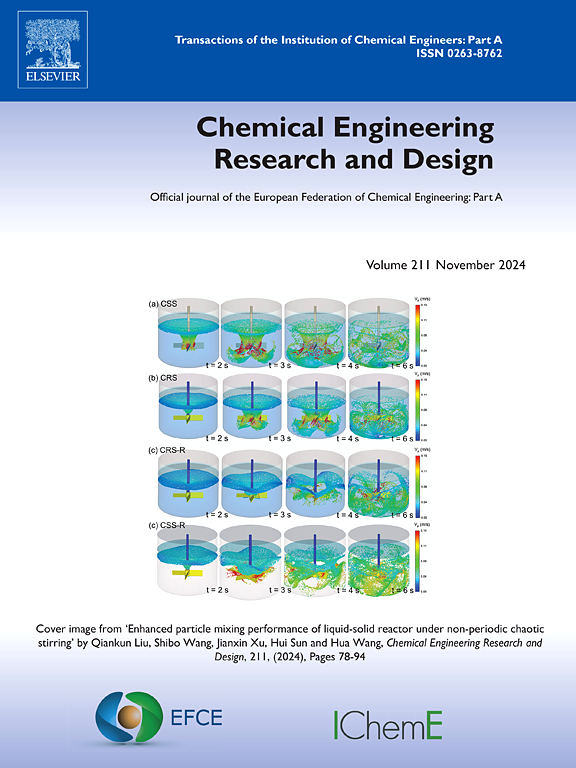基于时间卷积网络的工业质量变量预测及时学习法
IF 3.7
3区 工程技术
Q2 ENGINEERING, CHEMICAL
引用次数: 0
摘要
实时获取质量变量对于加强控制和优化工业流程至关重要。软传感器等过程建模方法提供了一种利用易于测量的过程参数预测难以获取的质量变量的方法。然而,工业流程的动态性质给建模带来了巨大挑战。例如,传统模型通常使用历史数据进行离线训练,无法适应数据分布或环境条件的实时变化。为了应对这一挑战,我们引入了一种名为 "残差时空注意力时空卷积网络"(RTA-TCN)的新方法,并提出了一种基于 RTA-TCN 的及时学习方法,用于工业流程建模。RTA-TCN 模型将时间注意力纳入 TCN,从而能够将前一时间步的过程变量整合到当前变量中,并在输入中融合内部相关特征。此外,为了防止在特征整合过程中部分丢失原始信息,在时间注意力机制中引入了残差连接。这些连接有助于在整合相关特征的同时最大限度地保留原始特征信息。因此,拟议的 RTA-TCN 在处理工业变量固有的非线性和长期动态依赖性方面具有显著优势。此外,所提出的即时学习方法利用 RTA-TCN 作为局部模型,并利用在线工业数据对其进行实时更新。这种即时学习方法能有效适应不同的数据分布和环境条件。我们使用两个工业数据集(脱碱塔和硫磺回收装置)验证了我们方法的性能。本文章由计算机程序翻译,如有差异,请以英文原文为准。
A temporal convolution network-based just-in-time learning method for industrial quality variable prediction
Real-time acquisition of quality variables is paramount for enhancing control and optimization of industrial processes. Process modeling methods, such as soft sensors, offer a means to predict difficult-to-obtain quality variables using easily measurable process parameters. However, the dynamic nature of industrial processes poses significant challenges to modeling. For instance, conventional models are typically trained offline using historical data, rendering them incapable of adapting to real-time changes in data distribution or environmental conditions. To tackle this challenge, we introduce a novel approach termed the Residual Temporal Attention Temporal Convolution Network (RTA-TCN) and propose a just-in-time learning method based on RTA-TCN for industrial process modeling. The RTA-TCN model incorporates temporal attention into TCN, enabling the integration of previous time-step process variables into the current ones, as well as the fusion of internally relevant features among inputs. Moreover, to prevent the partial loss of original information during feature integration, residual connections are introduced into the temporal attention mechanism. These connections facilitate the retention of original feature information to a maximal extent while integrating relevant features. Consequently, the proposed RTA-TCN demonstrates significant advantages in handling the non-linearity and long-term dynamic dependencies inherent in industrial variables. Additionally, the proposed just-in-time learning method leverages RTA-TCN as a local model and updates it in real-time using online industrial data. This just-in-time learning method enables effective adaptation to varying data distributions and environmental conditions. We validate the performance of our method using two industrial datasets (Debutanizer Column and Sulfur Recovery Unit).
求助全文
通过发布文献求助,成功后即可免费获取论文全文。
去求助
来源期刊

Chemical Engineering Research & Design
工程技术-工程:化工
CiteScore
6.10
自引率
7.70%
发文量
623
审稿时长
42 days
期刊介绍:
ChERD aims to be the principal international journal for publication of high quality, original papers in chemical engineering.
Papers showing how research results can be used in chemical engineering design, and accounts of experimental or theoretical research work bringing new perspectives to established principles, highlighting unsolved problems or indicating directions for future research, are particularly welcome. Contributions that deal with new developments in plant or processes and that can be given quantitative expression are encouraged. The journal is especially interested in papers that extend the boundaries of traditional chemical engineering.
 求助内容:
求助内容: 应助结果提醒方式:
应助结果提醒方式:


